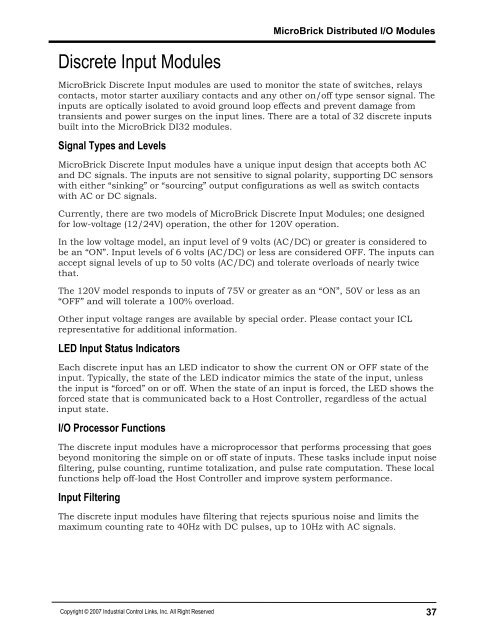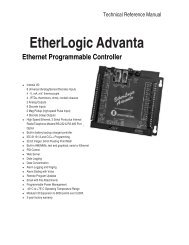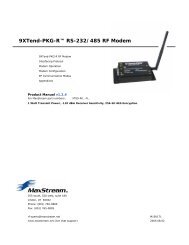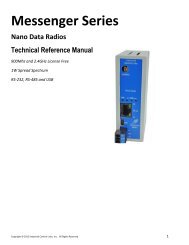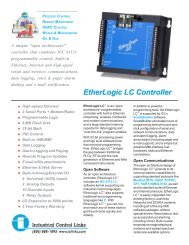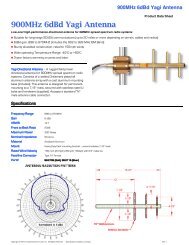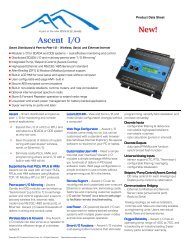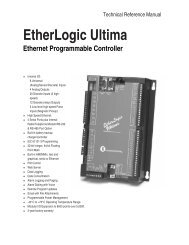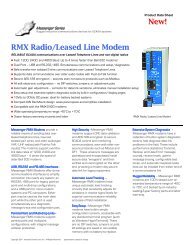MicroBrick I/O - Industrial Control Links
MicroBrick I/O - Industrial Control Links
MicroBrick I/O - Industrial Control Links
Create successful ePaper yourself
Turn your PDF publications into a flip-book with our unique Google optimized e-Paper software.
Discrete Input Modules<strong>MicroBrick</strong> Distributed I/O Modules<strong>MicroBrick</strong> Discrete Input modules are used to monitor the state of switches, relayscontacts, motor starter auxiliary contacts and any other on/off type sensor signal. Theinputs are optically isolated to avoid ground loop effects and prevent damage fromtransients and power surges on the input lines. There are a total of 32 discrete inputsbuilt into the <strong>MicroBrick</strong> DI32 modules.Signal Types and Levels<strong>MicroBrick</strong> Discrete Input modules have a unique input design that accepts both ACand DC signals. The inputs are not sensitive to signal polarity, supporting DC sensorswith either “sinking” or “sourcing” output configurations as well as switch contactswith AC or DC signals.Currently, there are two models of <strong>MicroBrick</strong> Discrete Input Modules; one designedfor low-voltage (12/24V) operation, the other for 120V operation.In the low voltage model, an input level of 9 volts (AC/DC) or greater is considered tobe an “ON”. Input levels of 6 volts (AC/DC) or less are considered OFF. The inputs canaccept signal levels of up to 50 volts (AC/DC) and tolerate overloads of nearly twicethat.The 120V model responds to inputs of 75V or greater as an “ON”, 50V or less as an“OFF” and will tolerate a 100% overload.Other input voltage ranges are available by special order. Please contact your ICLrepresentative for additional information.LED Input Status IndicatorsEach discrete input has an LED indicator to show the current ON or OFF state of theinput. Typically, the state of the LED indicator mimics the state of the input, unlessthe input is “forced” on or off. When the state of an input is forced, the LED shows theforced state that is communicated back to a Host <strong>Control</strong>ler, regardless of the actualinput state.I/O Processor FunctionsThe discrete input modules have a microprocessor that performs processing that goesbeyond monitoring the simple on or off state of inputs. These tasks include input noisefiltering, pulse counting, runtime totalization, and pulse rate computation. These localfunctions help off-load the Host <strong>Control</strong>ler and improve system performance.Input FilteringThe discrete input modules have filtering that rejects spurious noise and limits themaximum counting rate to 40Hz with DC pulses, up to 10Hz with AC signals.Copyright © 2007 <strong>Industrial</strong> <strong>Control</strong> <strong>Links</strong>, Inc. All Right Reserved37


